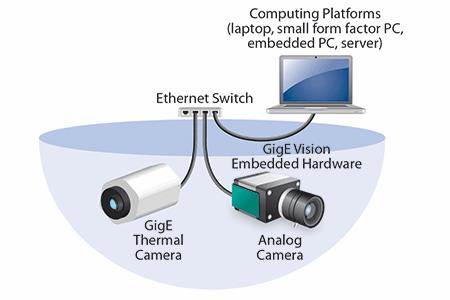Machine Vision Brings Cost And Performance Advantages To Military Imaging
By Marc-Andre Casavant, engineer, Pleora Technologies
Real-time video, enabled by networked digital distribution technologies, helps to provide the local situational awareness vital to military vehicle survival.
 Vision systems are playing an increasingly important role on the battlefield, with high-bandwidth video improving surveillance and intelligence while helping keep troops out of harm’s way. In a local situational awareness (LSA) system, for example, real-time video is transmitted to display panels so crew members can navigate windowless ground-based vehicles while remaining constantly aware of their surroundings.
Vision systems are playing an increasingly important role on the battlefield, with high-bandwidth video improving surveillance and intelligence while helping keep troops out of harm’s way. In a local situational awareness (LSA) system, for example, real-time video is transmitted to display panels so crew members can navigate windowless ground-based vehicles while remaining constantly aware of their surroundings.
In these sophisticated LSA systems, video and data from multiple imaging sources must be shared across multiple endpoints — including computers used for automated analysis and display panels for human observation — over a common infrastructure. Early military vision systems used point-to-point interfaces to connect endpoints. These umbilical connections, based on analog, Camera Link, or low-voltage differential signaling (LVDS) interfaces, required a dedicated cable between each imaging device and its endpoint.
Get unlimited access to:
Enter your credentials below to log in. Not yet a member of Photonics Online? Subscribe today.
